Investor News
Is Victoria's big battery just an expensive 'bandaid'?
The Victorian government has just announced the go-ahead for the biggest battery in the southern hemisphere.
With a capacity of 300MW and the ability to supply 450MWh of electricity, it's twice as big as South Australia's big battery, which weighs 150MW and 194MWh.
Why do we need the battery?
Well, the answer varies, depending on who you ask. Which is concerning.
The Minister for Energy, Lily D'Ambrosio tells us:
"We know in the time of climate change, our summers are getting far hotter and much longer, so that means there is increased strain on our thermal generators"
Whereas, AusNet Services (the folks who actually own and operate the Victorian electricity transmission network) executive general manager of regulation and external affairs, Alistair Parker, tells us:
"Its critical role though will be enabling extra interconnector capacity. If we have a fault in the network it can very quickly give us 250 megawatts and nobody will see the inconvenience in the network."
A quick fact check confirms that, as reviews such as the Finkel report have recognised, the successful integration of intermittent generation into the NEM requires energy storage so that the energy from that source can be used when it is most needed. This is especially true when intermittent power generation exceeds 10% of total generation, as it did in Victoria in 2018.
Energy Policy Outcomes
Since taking office in 2013, the government has overseen the addition of ~2,770MW of wind and solar power and the removal of ~1,600MW of brown coal power.
Paradoxically, despite the net increase in capacity of over 1,000MW, the state is producing less overall power.
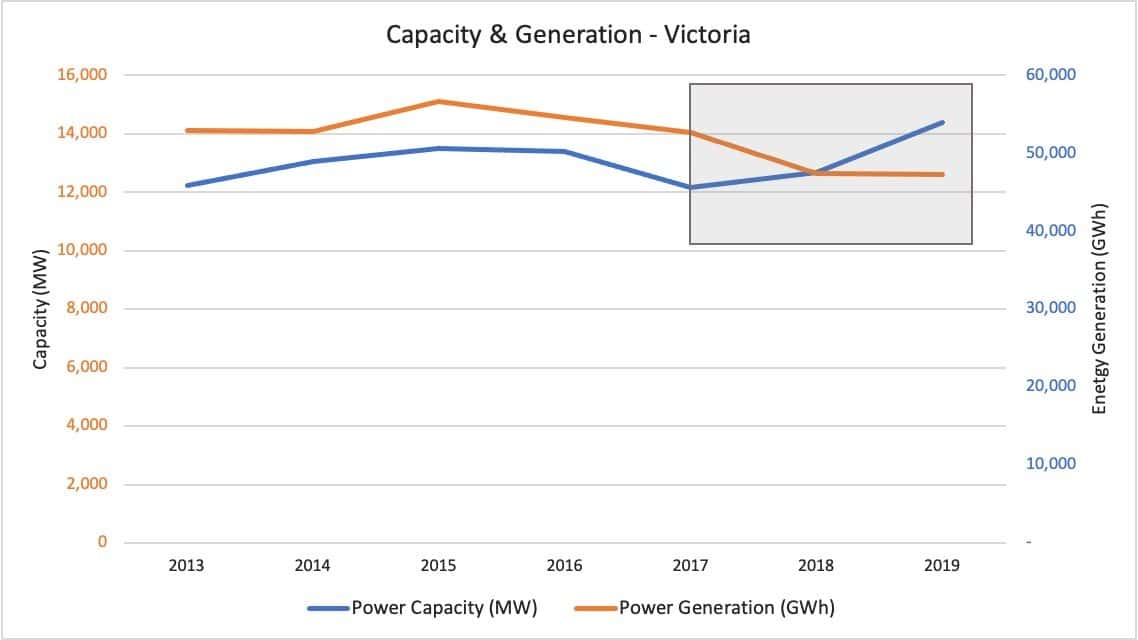
Moreover, wholesale electricity prices have gone from being the most affordable to the least affordable.
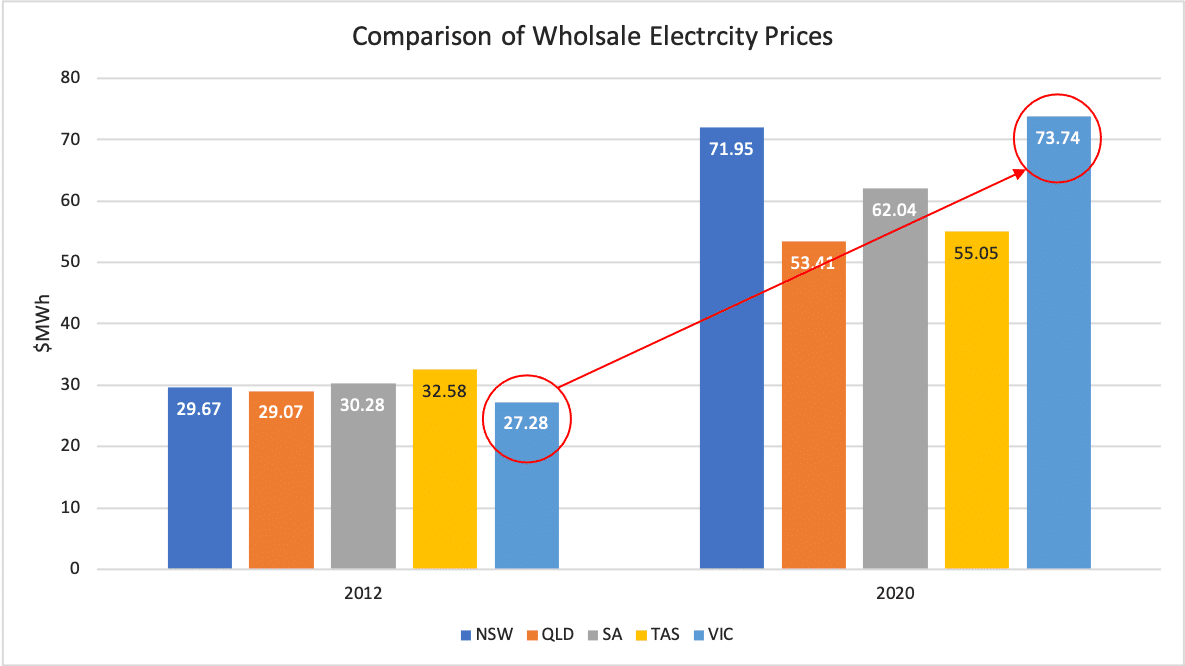
This is due to the difference between 'dispatchable' and 'variable' power.
That ~1,600MW coal plant averaged ~85% output, or ~1,360MW. Granted, it was old and would occasionally suffer partial unplanned outages, but that was usually confined to one of its eight ~200MW turbines. For context, wind output can and does fluctuate by ~1,600MW (or more) within a day.
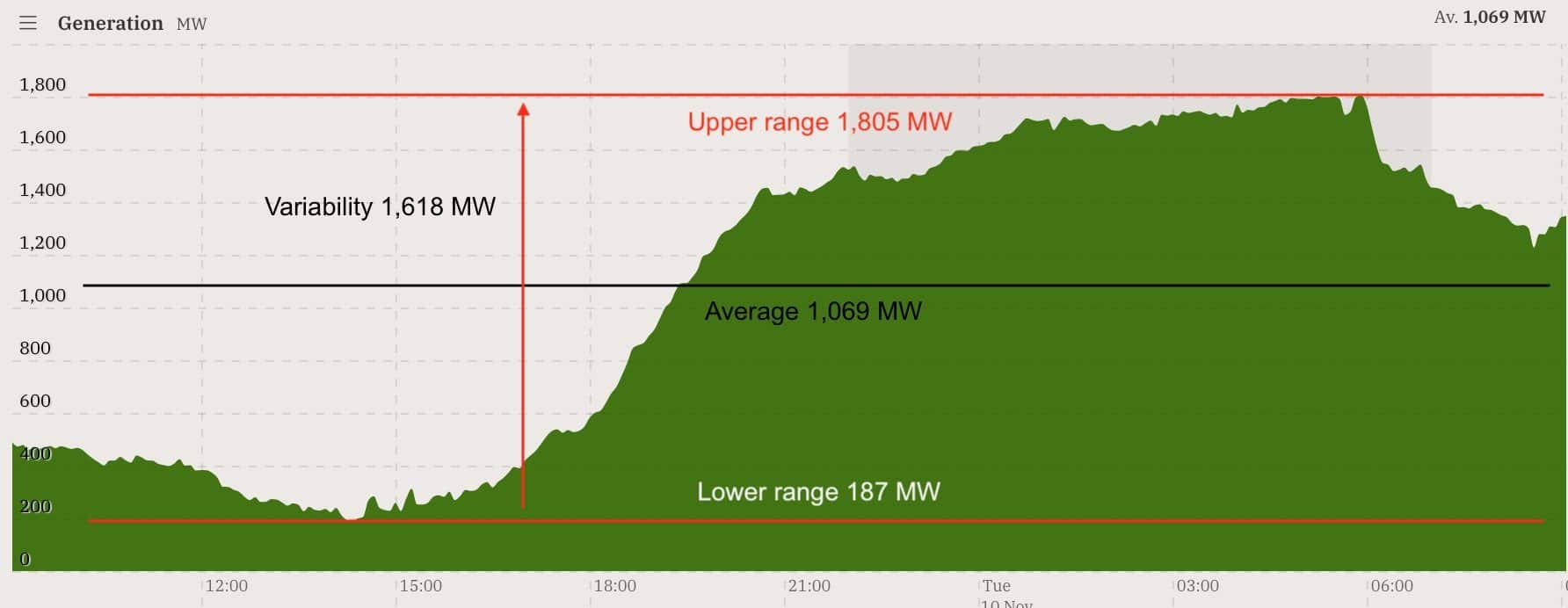
Notice in the chart above that wind is almost non-existent during the evening peak, then reaches maximum output overnight, when demand is lowest.
Long-term, wind and solar average 30% and 25%, respectively, making the ~2,770MW of new capacity worth around 550MW. Even then, it doesn't usually coincide with demand.
What is missing is 'firming' capacity.
Firming is the inclusion of backup generation or storage to enable wind and solar to provide energy to the grid when actually needed. The question of how much firming or storage is required is complex due to the interactions of the markets, the location and type of generation capacity, and seasonal variations, which impact wind and solar output and demand.
For an in-depth look at the tradeoffs between backup capacity and storage at different levels of variable renewable energy penetration, you can take a look at the report by Marsden Jacob Associates that reviewed the techno-economic case for the Snowy 2.0 project.
However, regarding backup generation, wind requires about 90% of its capacity to deliver firm, reliable power, while solar requires 100%.
Storage capacity varies with the amount of variable renewable energy in the mix. At 50%, 8 hours of storage are required. At 70%, around 16 hours are required, and for 100%, a full day is needed.
This backup and storage is part of the true cost of wind and solar but is always omitted or shifted by wind and solar advocates.
As AusNet Services states, the biggest battery in the southern hemisphere isn't designed to strengthen our existing wind and solar capacity. It's just meant to enable more capacity to flow through to Victoria from NSW.
In other words, it's little more than a giant bandaid to help keep our lifeline to the NSW grid stable while we wait for more firm, dispatchable capacity and storage to come online.
Admitting the problem is the first step to solving it
You can't apply a solution to a problem that doesn't exist.
As such, Minister D'Ambrosio should be commended for acknowledging that energy policy outcomes have resulted in a power system that has become unreliable and unaffordable, noting the battery is...
"... part of our plan to deliver security, reliability and affordable power."
Unfortunately, despite the best evidence, wind and solar advocates believe that they can provide reliable, affordable power if they can simply build enough wind and solar capacity.
Unfortunately, nowhere in the world does high wind and solar penetration coincide with low electricity prices, and recent experience tells a different story.
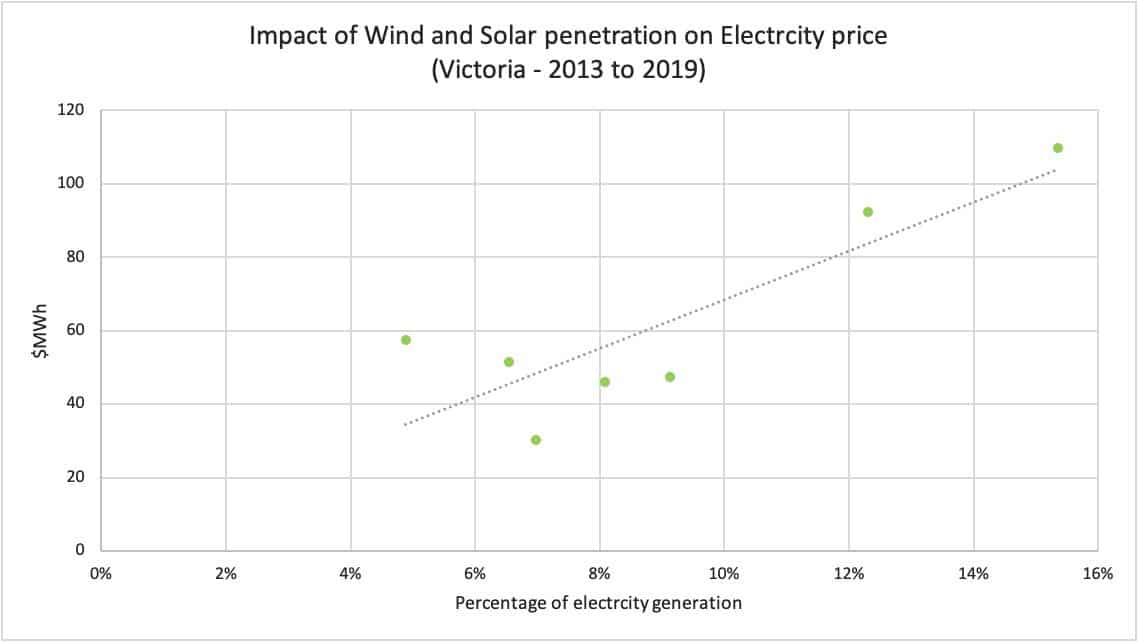
While wind and sunshine are free, the infrastructure required to capture and convert them to reliable electricity is not. Despite the very real declines in the cost of wind turbines and solar panels, increased variable renewable energy penetration has resulted in skyrocketing prices.
The paradox of decreasing wind and solar costs and increasing electricity prices
According to energy analyst Lazard, the cost of wind and solar energy has decreased by 40% and 60% since 2013.
So, why did wholesale electricity prices rise in Victoria with the addition of ~2,770MW of new, supposedly cheap wind and solar power?
The 'cheap' wind and solar paradox
There's a clear correlation between the rollout of increasingly cheaper wind and solar and Victoria's dramatic increase in wholesale electricity prices.
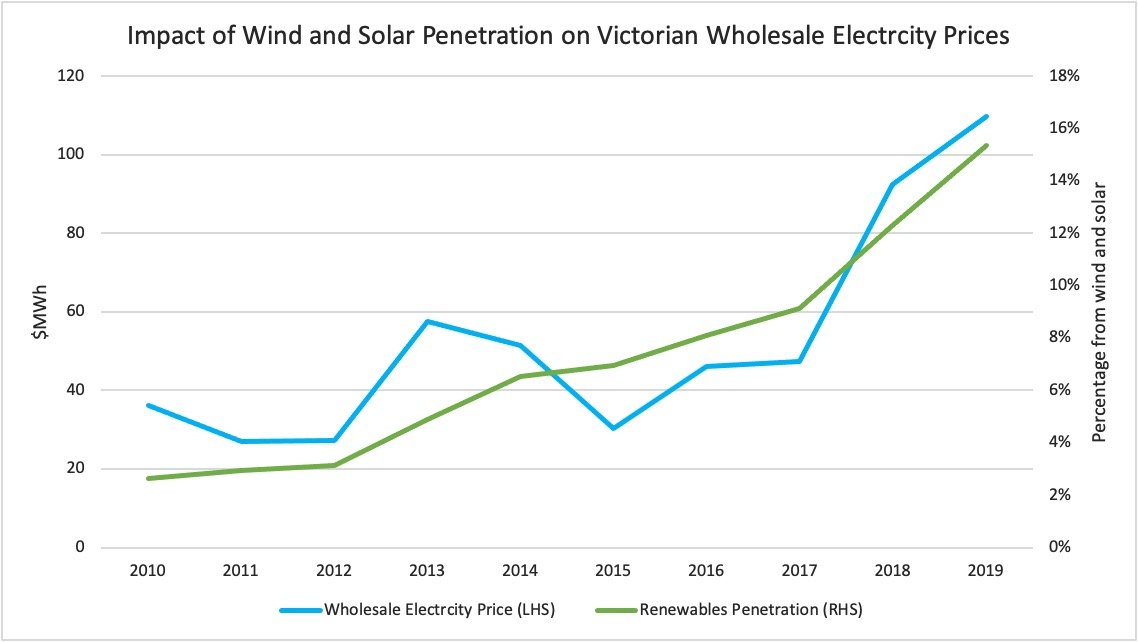
This tells us that the system cost is being driven by more than just the direct costs of wind and solar energy.
Simply, the answer lies in the difference in capacity factor (the average output from a given power generator mentioned above) and how one accounts for the cost of reliability.
In terms of accounting for the cost of wind and solar energy, the levelised cost of energy calculation only includes the directly incurred capital, operating, fuel, and finance costs of a particular technology in isolation.
It doesn't include the cost of reliability, which makes wind and solar look cheap in isolation. However, the cost of maintaining stability and reliability is shifted to thermal generators or network charges on retail power bills.
However, power generators, whether thermal power plants or wind and solar, rarely operate in isolation; they are part of a larger grid.
The effect of variable wind and solar on system costs often depends on the cost of the electricity that it displaces. Mandates require that wind and solar be 'used' ahead of coal and natural gas generation when available. Solar generation during the day generally displaces brown coal power, while wind generation may displace natural gas, each with different cost profiles.
To handle wind and solar's unreliability, system operators need to activate ramping resources such as natural gas more frequently to meet demand. These usually have higher operating costs. As such, increased use during low wind periods or during the morning and evening peak demand periods where solar is minimal can raise total system costs even as renewable costs decline.
Crucially, these dispatchable power sources must be kept idle to provide reliable backup, with the costs of maintaining this backup capacity passed on to consumers but not included as a direct firming cost for wind and solar.
In short, how the cost of wind and solar is calculated externalises or shifts the cost of reliability. As a result, we are now about to pay $200m to restore a small part of the lost stability and reliability.
Then there's the additional network cost. To cost-effectively deploy wind and solar, they must be located where they are most productive – in places with plenty of sun, wind and land. That is typically not close to the population centres, requiring more transmission infrastructure to connect supply with demand. Multiply that across many relatively small wind and solar farms, and the incremental network cost is substantial, adding about one-third to the actual project cost. However, rather than being attributed to the fact that wind and solar are diffuse, this cost usually appears as part of the separate network charge on retail bills.
The biggest battery in the southern hemisphere has become an absolutely essential measure to help stabilise and secure our grid due to the increased penetration of unreliable wind and solar generation.
What's needed now is a clear policy framework that ensures future wind and solar projects can provide firm, stable, dispatchable power if they are displacing coal or natural gas.